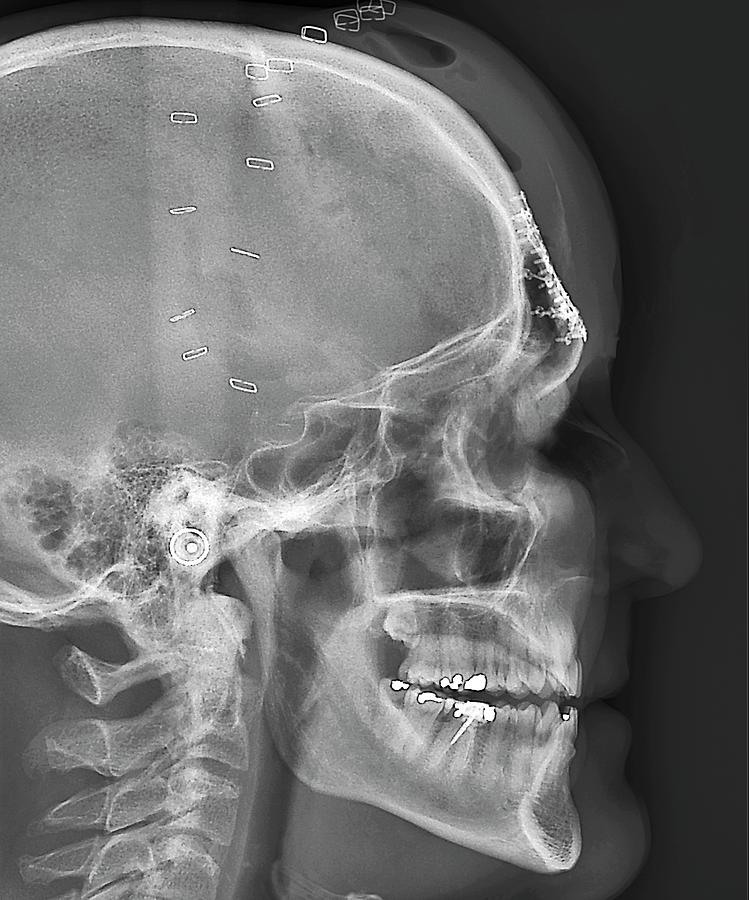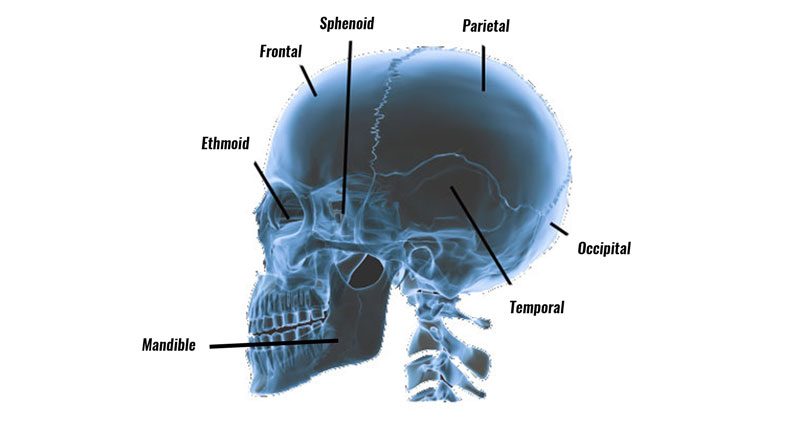
Linear Skull Fractures – This is the most common type of skull fracture. Most of the skull fractures are usually due to some sort of injury. There are mainly four skull fracture types. THERE ARE VARIOUS SKULL FRACTURE TYPES DEPENDING ON THE EXTENT OF THE SKULL INJURY. If you know the pain of a fracture on the hand or the leg, the pain is way worse when it comes to a skull injury or skull fracture. It can be fractured or broken by an impact of 7-10 km/hr. The human skull is just 1cm thick, about the same thickness as a ball point pen.
Skull fracture crack#
The injuries can be of different types, maybe a contusion or even a concussion which can prove to be heavily damaging.Ī skull fracture indicates a break or a crack in a bone in the skull. In the present study, we observed statistically significant results between surgical risk and skull fracture type, location, and severity and between surgical risk and EDH, among accompanying head injuries, on χ 2 test and univariate and multivariate logistic regression analyses.A head Injury or skull Injury is often fatal, luckily if not fatal can be severely damaging.Ī skull injury is one of the most common causes of disability and death in adults as well as children. , who reported no relationship between age and Glasgow Coma Scores in 62 pediatric patients with skull trauma. revealed no association of brain injury and skull fracture in 27 children with all-terrain vehicle injuries that led to brain injury, which was also supported by Godano et al. reported that the likelihood of an intracranial injury is increased 4-fold in the presence of skull fractures. Schutzman and Greenes revealed that 15% to 30% of linear skull fractures were related to intracranial injury, and Quayle et al.

In the same study, brain injuries were observed to be significantly related to long-term disability or death. , calvarial fractures were observed to be significantly related to brain injuries, epidural hematoma, and SDH. They concluded that more severe skull fracture injuries have higher surgery risk.

demonstrated that 7.5% underwent surgery and observed that skull fractures that consisted of 2 skull bones were 22% and those with 3 skull bones were 31.3%. With regard to pediatric external trauma that leads to skull fractures, Bonfield et al. To compare the clinical characteristics of the pediatric skull fractures, the presence of accompanying lesions such as subgaleal hematoma, pneumocephalus, epidural hemorrhage (EDH), subdural hemorrhage (SDH), intracerebral hemorrhage (ICH), subarachnoid hemorrhage (SAH), and brain swelling was also assessed. The skull fracture severity was scored for the number of skull fractures and was defined as 1 degree for a total of 1 fracture, 2 degrees for 2 fractures, 3 degrees for 3 fractures, and 4 degrees for ≥4 fractures or more. A 3DCT was performed as previously described to assess the skull fracture type, location, and severity ( Fig. Those who did not undergo 3DCT within 48 hr after head injury were also excluded. Patients with nontraumatic skull fractures from other etiologies and neonates were excluded from this study. The medical records of 291 pediatric patients younger than 12 years who visited our institute for head trauma and were suspected to have skull fractures and underwent 3DCT, from 2005 to 2014, were retrospectively evaluated. Importantly, owing to the advances in 3DCT technology, there is no increased risk of radiation exposure compared to that with 2-dimensional CT (2DCT) hence, this imaging modality was recommended as the primary diagnostic tool for the assessment of pediatric skull fractures in the emergency room. suggested that 3DCT can provide a more accurate diagnosis of not only linear skull fractures but also DSFs.

recently proposed the use of 3-dimensional computed tomography (3DCT) for enhanced detection of linear skull fractures in pediatric patients. However, as the pediatric skull bone is thin and lacks ossification, diagnosis of linear fractures by simple X-ray imaging may be difficult, and sutural ossifications are often incomplete, making accurate detection of diastatic skull fractures (DSF) difficult. Accurate diagnosis of pediatric skull fracture is essential with regard to treatment.

Skull fractures comprise 2% to 16% of all pediatric skull fractures and have been reported to be related to intracranial injury such as intracranial hemorrhage and contusion in 15% to 50% of patients.


 0 kommentar(er)
0 kommentar(er)
